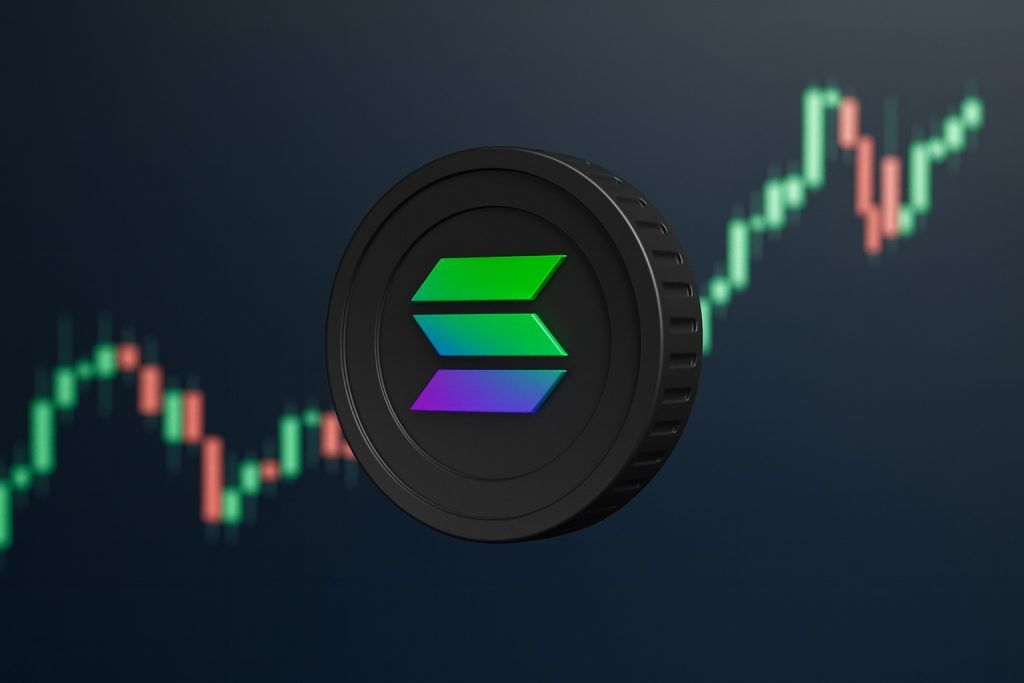- Crypto’s Go-To Data Hub:CoinMarketCap (CMC) is the world’s most popular cryptocurrency price-tracking website, founded in 2013 by Brandon Chez. It provides real-time data on over 20,000 crypto assets across 500+ exchanges, offering price charts, market cap rankings, trading volumes, historical snapshots, and more [1] [2]. CMC’s mission has been to make crypto markets “accurate, timely and unbiased” for users globally, which fueled its rise as a trusted resource cited by media like CNBC and Bloomberg [3].
- Binance Acquisition & Business Model: In April 2020, Binance (the largest crypto exchange) acquired CoinMarketCap in a deal reportedly worth up to $400 million [4]. CMC continues to operate independently under Binance’s ownership [5], tapping Binance’s resources to improve data depth while monetizing via ads, API subscriptions, and sponsored content (its “money generation mechanism” was weaker than Binance’s, as Binance CEO Changpeng “CZ” Zhao noted [6]). CZ emphasized the user base value, saying “CoinMarketCap has more users than any other product in the crypto space… it’s a very valuable platform and I think we can help grow it further.” [7]
- Features & Tools: Beyond price listings, CoinMarketCap has expanded into a full-suite crypto platform. It offers portfolio tracking and watchlists, price alerts, a fiat/crypto converter, a blockchain explorer, and global metrics like Bitcoin dominance and Fear & Greed Index [8]. CMC added an educational portal (CMC Academy) in 2020 [9], a rewards program (earning “Diamonds”) in 2021 [10], and even launched a ChatGPT-powered plugin in 2023 to deliver up-to-date market data via AI [11]. By 2025, a “CMC AI” assistant on the site is providing users with news summaries and insights for various coins, reflecting CMC’s push into AI-driven features for market analysis.
- Role in the Crypto Ecosystem: CoinMarketCap serves as an information backbone in crypto. It is often the first site new investors visit to check a coin’s price or ranking, and it recorded 13.2 billion page views in 2021 alone [12]. Its data aggregation (pulling prices, volumes, and supply figures from exchanges) helps standardize market information. CMC’s dominance means that a listing on the site can significantly increase a project’s visibility. It has sought to improve data integrity through initiatives like the Data Accountability & Transparency Alliance (DATA) launched in 2019 to encourage honest reporting from exchanges [13]. CMC also introduced new metrics (like Liquidity scores and exchange reserve data) to combat the problem of fake volume reporting [14] [15].
- Influence and Controversies: As the industry’s price reference, CoinMarketCap wields influence over market perception. For example, when CMC adjusts how it ranks exchanges or coins, it can sway public opinion and trading behavior. After the Binance acquisition, CMC faced conflict-of-interest concerns – and indeed in May 2020 it added a “Web Traffic Factor” to its exchange ranking formula that suddenly put Binance at #1 [16] [17]. This move drew criticism from competitors and users, who felt CMC’s neutrality was compromised [18] [19]. Executives from rivals like Huobi and OKX openly accused CMC of bias, and many in the community began promoting alternatives like CoinGecko and CoinPaprika over what they saw as “dead” CMC fairness [20] [21]. CMC’s leadership insisted it remains independent and neutral, but the episode underscored how data platforms can affect market trust. Even so, CMC remains a top resource, and its rankings (e.g. by market cap) continue to be a primary benchmark for crypto investors.
- Competitors – CoinGecko, CoinPaprika & Others:CoinGecko (launched 2014) has emerged as CMC’s chief competitor, offering similar price tracking for thousands of assets. Many traders praise CoinGecko’s independence (it wasn’t acquired by an exchange) and its quick listing of new tokens. CoinGecko also introduced its own analytics like exchange “trust scores” to address volume authenticity, something CMC tackled via its DATA alliance [22]. CoinPaprika (launched 2018, with roots in Poland) is another alternative, branding itself as a cryptocurrency research platform with extensive data and an ad-free experience. After CMC’s acquisition, both CoinGecko and CoinPaprika saw user growth from those wary of Binance’s influence [23]. Other competitors include CryptoCompare, Messari, and aggregator sites run by media (e.g. CoinDesk’s data section), but CoinMarketCap still leads in traffic and recognition [24] – it’s often considered the Coinbase of data sites due to its name recognition and early-mover advantage.
- Latest Updates (Oct 2025): In 2025, CoinMarketCap continues to roll out new features. It now offers crypto indices like the CMC 100 Index and tracks sectors (e.g. DeFi, NFTs, Real-World Assets) to help users slice the market. It also added sections for crypto ETFs as U.S. exchange-traded funds based on Bitcoin and Ethereum launched, reflecting how mainstream finance is intersecting with crypto data on the platform [25]. No major platform overhaul was announced in early October 2025, but CMC’s parent Binance has leveraged CMC’s brand (for example, Binance’s research reports and market updates sometimes co-brand with CMC’s data). The integration of an AI chatbot for market insights is one notable feature showing how CMC is adapting to the times. Meanwhile, CMC’s news feed and community pages aggregate headlines like partnerships (e.g. Ripple’s new stablecoin pilot in Bahrain) and technical analysis, indicating CMC’s role as not just a data ticker but a one-stop portal for crypto information.
- Broader Crypto Market in Uptober 2025: As of October 10, 2025, the crypto market is in the midst of a powerful rally often dubbed “Uptober.”Bitcoin (BTC) shattered its previous $69k all-time high, surging above $125,000 in early October [26]. It briefly peaked around $126,000 on Oct. 5 and then saw a modest 2–3% pullback to the low $120Ks by Oct. 8 as traders took profits [27]. Even after a slight dip, BTC is up ~10% for the month and an astonishing ~95% year-on-year [28]. Ethereum (ETH), the second-largest crypto, has been riding the wave too – trading around $4,400 as of Oct. 9, which is just 7–8% shy of its all-time high (~$4.8K) [29]. ETH dipped in September but quickly rebounded, underscoring renewed bullish momentum. Other major altcoins have seen dramatic moves: XRP (Ripple’s token) has rallied near $3.00, its highest price since the 2017–2018 crypto boom, after skyrocketing over 380% from its mid-2023 lows [30]. Solana (SOL), a leading smart contract platform, jumped to about $227 in early October (its highest since January) amid optimism over upcoming Solana ETF approvals [31]. The total crypto market capitalization now hovers around $4.3 trillion, with daily trading volumes near $200 billion – reflecting a highly active market [32].
- Drivers of the Rally: Analysts attribute the Uptober 2025 surge to several factors. A major one is institutional investment and regulatory green lights. In late 2024, U.S. regulators finally approved the first spot Bitcoin ETFs, which opened the floodgates for traditional investors to gain Bitcoin exposure [33]. By 2025, multiple Bitcoin ETFs (led by BlackRock’s iShares Bitcoin Trust, ticker $IBIT) have attracted tens of billions in capital. BlackRock’s fund alone grew to ~$90 billion AUM by October, ranking among the top 20 U.S. ETFs [34]. The launch of these ETFs galvanized Wall Street’s outlook on crypto – Standard Chartered even predicted Bitcoin could hit $135,000 in the near term, with a bull-case of ~$200K by end of 2025 [35]. Likewise, JPMorgan raised its year-end 2025 BTC forecast from $126K to $165,000, citing Bitcoin’s appeal as an inflation hedge and its growing valuation relative to gold [36]. Speaking of gold, the safe-haven metal soared to $4,000/oz (a record) in early October, highlighting investor hedging behavior, although Bitcoin outpaced gold’s gains this year [37].
- Regulatory & Macro Tailwinds: The policy environment by Oct 2025 has been notably crypto-friendly in key markets. In the U.S., the administration has leaned pro-crypto – for instance, President Trump (back in office) signed the GENIUS Act in July 2025 requiring dollar stablecoins to be fully backed and regularly audited, bringing clarity to stablecoin regulation [38]. He also appointed crypto-sympathetic officials (such as an FDIC head open to digital assets) [39]. Meanwhile, the SEC not only permitted Bitcoin ETFs but also saw courts rule favorably on crypto issues (notably, a court ruled XRP is not a security in public markets, leading to the SEC settling its case with Ripple by Aug 2025) [40]. This legal victory for XRP removed a cloud hanging over that asset and led U.S. exchanges to relist XRP, which helped its price surge [41]. In Europe, the MiCA regulatory framework took effect, providing a passportable license regime for crypto services in the EU. Ripple, for example, is seeking a license in Luxembourg under MiCA to expand in Europe [42]. Clearer rules have generally boosted confidence: institutions that were on the sidelines are now diving in. Wall Street firms and asset managers are pouring money into crypto, with spot Bitcoin ETFs seeing over $3.2 billion of inflows in just the first week of October as hedge funds and family offices increase exposure [43]. Even traditionally conservative banks are experimenting – e.g. Santander piloted XRP for cross-border payments, and Circle expanded a tokenized Treasuries fund onto Solana’s network [44] [45].
- Data Transparency and Market Impact: The rally has also drawn attention to crypto market data quality – an area CoinMarketCap and its rivals focus on. With prices hitting new highs, volume data is scrutinized: CMC reports total crypto market volume and liquidity metrics that analysts use to judge if a rally is “frothy” or supported by real demand. As of Oct 10, trading activity is robust but not absurdly overinflated: Binance and Coinbase (the two largest exchanges by volume) reported strong but orderly trading volumes during Bitcoin’s push past $125K [46]. CMC’s data shows exchange BTC balances at multi-year lows as investors withdraw coins to hold (about 170,000 BTC flowed off exchanges in the past month, indicating long-term confidence) [47] [48]. These on-chain and order-book trends tracked on data platforms give fundamental support to the market’s uptrend. Nonetheless, CMC’s Crypto Fear & Greed Index (which it publishes alongside market data) has moved into “Greed” territory [49] – a sign of bullish sentiment that contrarians watch warily. Some analysts warn that the market may be overheating: large speculative long positions built up during the run (a pattern that preceded short-term tops in the past) [50]. Veteran traders are using CMC and similar sites to monitor support levels (e.g. Bitcoin’s support is seen around $117K–$118K now) [51] [52] and volatility indices, aware that even in a bull market, corrections can strike suddenly. In short, CoinMarketCap’s role as the “market scoreboard” is crucial – it reflects not just prices but the collective psychology through metrics and indices that many investors consult daily.
- Crypto Market Outlook (Q4 2025 & Early 2026): The prevailing sentiment going into the final quarter of 2025 is cautiously optimistic. Many experts believe the crypto rally still has room to run, though perhaps with turbulence. Charles Edwards, founder of Capriole Investments, noted that if Bitcoin decisively clears the $125K level, it could trigger a “very quick” run to $150,000 “in the next days,” as momentum builds [53] [54]. On the more conservative side, analysts at Standard Chartered and Citi have outlined scenarios where BTC reaches $150K–$200K by late 2025 if favorable drivers (like ETF adoption, macro easing, and continued institutional buy-in) persist [55] [56]. Ethereum is also in focus – with ETH around $4.4K, many foresee a breach of the $5,000 milestone soon. “Ethereum’s path toward $5,000 will depend on a confluence of sustained institutional demand, upgrade-driven scalability, and supportive macro conditions,” observes Javier Rodriguez-Alarcón, CIO at digital asset firm XBTO [57]. So far, those factors are aligning: October saw nearly $1.5 billion flow into Ethereum ETFs in one week [58], and even a Nasdaq-listed company announced it holds over 2% of all ETH (a bet reminiscent of MicroStrategy’s Bitcoin play) [59] [60]. Looking further ahead, crypto forecasts for 2026 are being revised upward. JPMorgan’s $165K Bitcoin target by end-2025 suggests even higher prices into 2026 if the cycle continues. Bloomberg ETF analyst Eric Balchunas has mused that if BlackRock’s ETF keeps growing at this pace, it could break into the top 10 ETFs overall by 2026 – a testament to how mainstream Bitcoin investing might become [61] [62].
- Risks and Wildcards: Despite the rosy projections, experts do warn of potential wildcards. Macroeconomic shifts remain the biggest uncertainty – “optimism is still exposed to surprises from the Fed,” one analyst cautions [63]. If inflation flares up or the Federal Reserve reverses course on the anticipated rate cuts, risk assets like crypto could see sell-offs. Geopolitical events or regulatory crackdowns (for instance, if a major government suddenly imposed strict crypto bans or taxes) could also temper the rally. Thus far, the Q4 2025 landscape features more positive catalysts (ETF momentum, tech innovation like Solana’s speed upgrades [64], and even talk of U.S. government Bitcoin reserves [65]) than negative ones, but the crypto market’s notorious volatility means investors and platforms alike stay vigilant. CoinMarketCap’s own data will be a key bellwether: spikes in trading volume, stablecoin movements, or the Fear & Greed Index swinging too far can all signal when a euphoria-driven top might be near.
In summary, CoinMarketCap stands at the center of the crypto world’s information flow, from its early days pioneering market cap rankings to now tracking a multi-trillion-dollar asset class in real time. Its journey – including a high-profile Binance takeover, feature expansions, and challenges to maintain trust – mirrors the evolution of the crypto industry itself. As Bitcoin, Ethereum and other major assets hit historic highs in October 2025, platforms like CMC are busier than ever, informing millions of users and shaping how the market is perceived. With big institutional money entering crypto, new regulations on the books, and mainstream acceptance growing, CMC’s role as a reliable, transparent data provider is crucial. The next chapter (heading into 2026) will test whether crypto’s momentum can be sustained and whether CoinMarketCap can retain its crown in the face of competition and community scrutiny. For now, the numbers on CMC’s screen tell the story of a thriving if occasionally turbulent market – one that has matured significantly since 2013, yet still holds its share of surprises ahead.
Sources: CoinMarketCap & IQ.wiki [66] [67] [68] [69]; Finance Magnates [70] [71]; CoinMarketCap Academy [72] [73]; TechSpace (TS2) News [74] [75] [76] [77]; Reuters [78]; CoinDesk [79] [80]; CryptoNews [81]; CoinTelegraph [82].
References
1. iq.wiki, 2. iq.wiki, 3. iq.wiki, 4. coinmarketcap.com, 5. iq.wiki, 6. iq.wiki, 7. iq.wiki, 8. coinmarketcap.com, 9. coinmarketcap.com, 10. coinmarketcap.com, 11. iq.wiki, 12. coinmarketcap.com, 13. iq.wiki, 14. coinmarketcap.com, 15. www.financemagnates.com, 16. www.financemagnates.com, 17. www.financemagnates.com, 18. www.financemagnates.com, 19. www.financemagnates.com, 20. www.financemagnates.com, 21. www.financemagnates.com, 22. iq.wiki, 23. www.financemagnates.com, 24. iq.wiki, 25. coinmarketcap.com, 26. ts2.tech, 27. ts2.tech, 28. ts2.tech, 29. ts2.tech, 30. ts2.tech, 31. ts2.tech, 32. ts2.tech, 33. ts2.tech, 34. ts2.tech, 35. ts2.tech, 36. ts2.tech, 37. ts2.tech, 38. ts2.tech, 39. ts2.tech, 40. ts2.tech, 41. ts2.tech, 42. coinmarketcap.com, 43. ts2.tech, 44. ts2.tech, 45. ts2.tech, 46. ts2.tech, 47. ts2.tech, 48. ts2.tech, 49. ts2.tech, 50. ts2.tech, 51. ts2.tech, 52. ts2.tech, 53. ts2.tech, 54. ts2.tech, 55. ts2.tech, 56. ts2.tech, 57. ts2.tech, 58. ts2.tech, 59. ts2.tech, 60. ts2.tech, 61. ts2.tech, 62. ts2.tech, 63. ts2.tech, 64. ts2.tech, 65. ts2.tech, 66. iq.wiki, 67. iq.wiki, 68. iq.wiki, 69. iq.wiki, 70. www.financemagnates.com, 71. www.financemagnates.com, 72. coinmarketcap.com, 73. coinmarketcap.com, 74. ts2.tech, 75. ts2.tech, 76. ts2.tech, 77. ts2.tech, 78. ts2.tech, 79. ts2.tech, 80. ts2.tech, 81. ts2.tech, 82. ts2.tech









